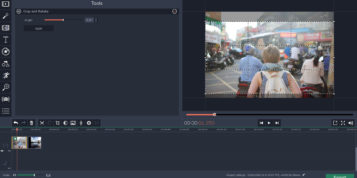Facebook fans, Netflix aficionados, Instagram enthusiasts and digital marketers will all experience a surge in the use and availability of digital video across multiple platforms and devices this year. Here are five predictions covering how video will further permeate our personal and work lives during 2014.
– Facebook will embrace video. Expect to see Facebook going head to head with YouTube this year. After adding video capabilities to its images app, Instagram, Facebook is now planning to introduce an auto-play functionality within news feeds (similar to the auto-play functionality in Instagram).
Furthermore, Facebook is gunning for YouTube’s advertising dollars ($5.6 billion in 2013) and has been telling advertisers that it is better positioned to deliver eyeballs on mobile and to increase traditional TV ratings using second-screen experiences than its rival. With Twitter trying to achieve similar recognition as the ultimate TV-viewing social tool, 2014 looks set to be a very interesting year for social video.
– Long-form content monetisation will grow. Netflix is already the largest online video hub and will maintain this dominant position this year. That said, I expect to see more content holders and producers monetising their content by going “direct to consumer”, thereby relying less on the likes of Netflix, Amazon or iTunes.
With new out-of-the-box products that provide user-facing applications and an e-billing component, this should be easier than ever. While we will see many VOD services that will offer Netflix-style “all you can eat” content for a fixed price, I predict that more companies will adopt a hybrid business model that combines ads and subscriptions, like Hulu/Hulu Plus.
– Higher CPMs for long form content. High-quality content deserves high CPMs. Studies show that young viewers (Generation Y and Z) prefer to do their time-shifted viewing on online sites rather than via a DVR. As a result, some of the advertising budget that used to go solely to TV air time will find its way to online operators.
Furthermore, we can expect a change in how TV networks sell advertising time: slots will be sold per TV show, and will encompass both traditional TV and online channels. This will give the broadcasters more flexibility with ad pricing, while advertisers will reach their target audiences more effectively, regardless of how they choose to view the show.
– Maximising the potential of mobile. More marketing tools that harness the power of mobile video will be deployed this year, making mobile video as effective as PC-based video for businesses. All web properties will eventually be based on an adaptive design that enables analytics tools to track mobile views as easily as PC-based video views. Furthermore, we will see video ad delivery being optimised to reach more devices by using server-side stitching.
This technology makes it possible to “stitch” the ad to the main video, ensuring that the ad will be served regardless of the device (iPhone, Android etc.) or platform (video player, aggregators as Flipboard). Email templates will also become more mobile friendly and allow easy video integration.
– A greater focus on visuals. Looking back at how consumer technology has evolved, I see a clear connection between technology and image-based content delivery that is changing the way audiences process and share information. Just think of Youtube (video), iPhone (mobile, excellent UI) and Instagram (images).
Dynamic videos, high-res images, attractive slides – all of these dramatically increase messaging effectiveness, engagement and virality. As a result, we’ll see more businesses dedicating team members to work on their YouTube, Instagram and SlideShare presence.
I’d love to hear your thoughts. Do you agree or disagree with me – or perhaps you have an entirely different set of predictions?






